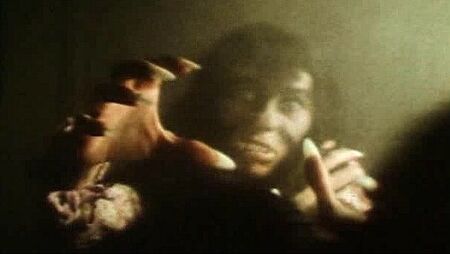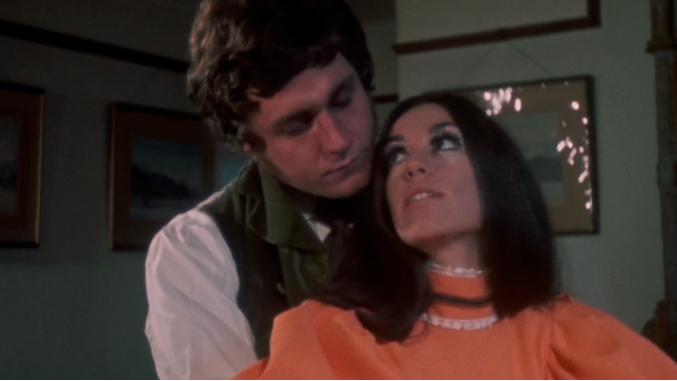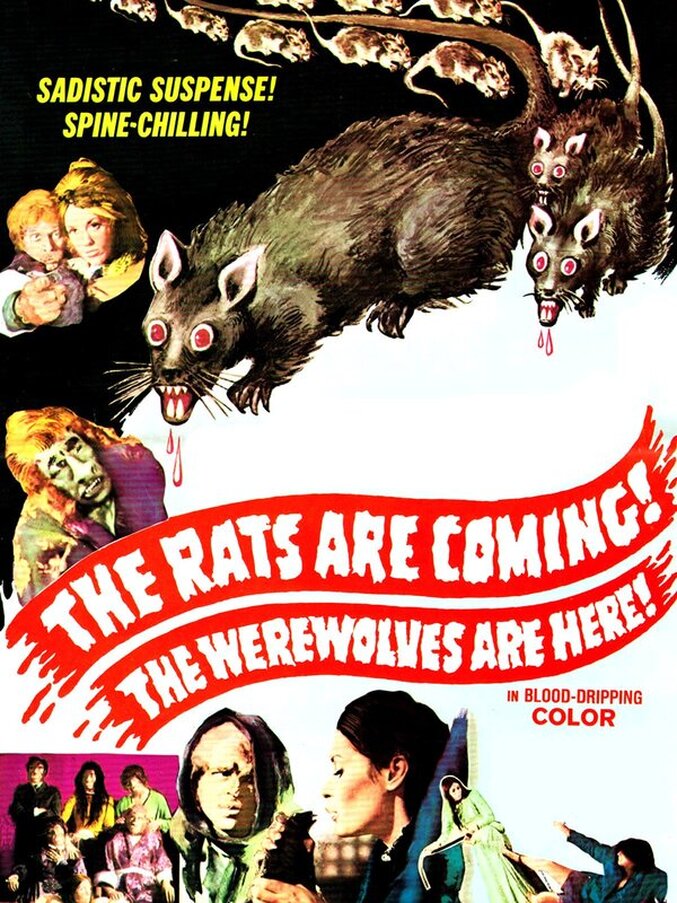 Welcome to a weekly series in which Doris V. Sutherland takes readers on a trip through the history of werewolf cinema... ...The Rats are Coming! The Werewolves are Here! (1972) introduces us to the Mooney family, a Victorian clan whose closet is positively brimming with skeletons. The household patriarch (Douglas Phair) has been keeping himself alive for more than a century with a series of secret injections; son Malcolm (Berwick Caler) has to be chained up to stop him from going on a rampage; daughter Monica (Hope Stansbury) is an unhinged sadist; and to cap it off, everyone’s a werewolf. Small wonder that Diana (Jackie Skarvellis) wants to escape her family—but what will her lover Gerald (Ian Innes) make of his new in-laws? WARNING: SPOILERS AND MENTIONS OF ANIMAL TORTURE AHEAD When this bizarrely-named film came out in 1972, werewolf cinema had been in existence for fifty-nine yeas. Writer-director Andy Milligan succeeded in creating what is almost certainly the single worst entry in the genre from the entire period. Indeed, nearly fifty years later, The Rats are Coming! The Werewolves are Here! may still be the worst werewolf movie ever made. It’s hard to say where to begin. The film’s attempts at creating a Victorian period atmosphere make Hammer seem the model of authenticity: at first, it’s not even clear if the characters are actually meant to be Victorians or some sort of Addams Family-style clan of modern-day throwbacks. Heroine Diana, supposedly a typical Victorian girl, spends the film daubed in garish dollybird makeup—her eyeshadow alone will give coulrophobes nightmares. And then we have the dialogue. The Mooneys appear to communicate with one another primarily through infodumps, and Diana is hell-bent on introducing Gerald to the family tradition: “Let me tell you some things about the family. Phoebe’s the eldest: she’s 39 and she’s been almost like a mother to us. Mortimer’s the next in line, he’s 29, then Monica who’s 25 and Malcolm’s 23. Finally, there’s me. As you know, I’ve just become 21. That’s why I couldn’t marry you last year when you asked me. Papa wouldn’t have allowed it, and I had to wait to come to age before I could give my consent.” As it happens, Gerald is a quick learner and replies with his own mighty chunk of exposition. He describes how his father deserted his mother and then got arrested for molesting and murdering a 6-year-old girl, which led to him being hanged until his decomposing body had to be cut down for health reasons and buried outside an insane asylum, after which Gerald’s mother died of grief and shame, leading to him being sent to an orphanage where he was bound and beaten by sadistic nuns. Diana’s response to these revelations: “My God, I love you so much.” Clearly realising that its plot has floundered, the film falls back on a trick that would later serve Italian cannibal movies so well: unsimulated animal mutilation. One scene has the Renfield-like Monica tormenting a live mouse, prodding it about with a knife before cutting its ear off right on camera; the shot ends with her apparently nailing the unfortunate creature to the table. Her hand mercifully blocks the details from view here, but the blow to the nail looks convincing enough to raise serious questions as to whether the mouse survived the end of the shoot (needless to say, the “no animals were harmed” disclaimer is absent from this film). This hideous sequence is followed by a scene of Diana wittering about her family situation, in the profoundly mistaken belief that the nauseated audience will give a fig. The first half of the film’s title refers to a later sequence in which Monica sneaks into the seedy underbelly of Victorian England incognito (this entails wearing bright red lipstick and a white top hat, making her look like Columbia from Rocky Horror). She buys a cage of rats from a disfigured peddler (played by director Andy Milligan) who warns her that the rats eat human flesh: in fact, when he fell into a drunken stupor, they ate his arm and part of his face, turning him into a cut-price Phantom of the Opera. Monica ignores this warning and, after being bitten by a rat, she asks for a refund; when the peddler refuses, she sets him on fire, killing him. The sequence is never mentioned again and has no impact on the plot. All of this might have been amusing, were it not for the lingering dread that Milligan’s going to start slicing up small furry rodents on-camera again. The film continues to meander (Monica is given a crazy Cockney friend, written into the story purely to be killed off shortly afterwards in a laughably bad murder scene) before reaching a climax where all of the Mooneys turn into werewolves one by one. This stands out as the one good idea the movie has: the idea of the cursed family had long been a stock plot element in the werewolf genre, but most films had contented themselves with one lycanthrope per household. Here, for the first time, we see the full implications of a werewolf family right onscreen. Alas, the terrible direction inevitably robs the sequence of any potential. The Rats are Coming! The Werewolves are Here! seems to be an attempt at emulating the 1950 EC horror comics. The overripe dialogue, broad characters and twist ending are all fairly consistent with this model, and even the perplexing title seems intended to evoke the magazines that published stories with names like “Horror We? How’s Bayou?” But while Amicus was doing competent retro-EC work at around this time, Andy Milligan’s effort is an irredeemable mess, destined to be remembered as nothing more than “the one where somebody chops a mouse’s ear off.” By Doris V. Sutherland Please consider joining us in celebrating Black History Month by donating to BlackLivesMatter.com
0 Comments
Leave a Reply. |
Archives
March 2023
|


 RSS Feed
RSS Feed